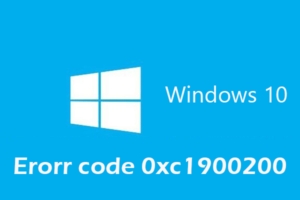-
Table of Contents
- Optimizing Windows’ File Explorer for Faster Folder Opening
- Troubleshooting Slow Folder Opening in Windows’ File Explorer
- Boosting File Explorer Performance: Quick Fixes for Slow Folder Access
- Enhancing Windows’ File Explorer Speed: Tips to Accelerate Folder Opening
- Unlocking the Potential: How to Speed Up Folder Access in Windows’ File Explorer
- Q&A
“Boost your productivity with a faster File Explorer experience on Windows.”
Windows’ File Explorer is a commonly used tool for navigating and managing files and folders on a Windows operating system. However, some users may experience slow loading times when opening folders, which can be frustrating and time-consuming. Fortunately, there is a trick that may help speed up the process and improve the overall performance of File Explorer.
Optimizing Windows’ File Explorer for Faster Folder Opening
Windows’ File Explorer is a powerful tool that allows users to navigate through their computer’s files and folders. However, one common issue that many users face is slow folder opening times. This can be frustrating, especially when you’re in a hurry or working on a time-sensitive project. Fortunately, there is a simple trick that may help speed things up and improve your overall experience with File Explorer.
Before we delve into the solution, it’s important to understand why File Explorer may be opening folders slowly in the first place. One possible reason is that the folder you’re trying to open contains a large number of files or subfolders. When File Explorer encounters a folder with a substantial amount of data, it needs to process and load all the information, which can take time.
Another factor that can contribute to slow folder opening times is the presence of third-party shell extensions. These extensions are additional software components that integrate with File Explorer and provide additional functionality. While some shell extensions can be useful, others may cause conflicts or slow down the overall performance of File Explorer.
Now, let’s move on to the trick that may help speed up folder opening times in File Explorer. The first step is to open File Explorer and navigate to the “View” tab in the ribbon menu. From there, click on the “Options” button, which will open the Folder Options dialog box.
In the Folder Options dialog box, navigate to the “View” tab. Here, you’ll find a list of advanced settings for File Explorer. Look for the option that says “Launch folder windows in a separate process” and make sure it is checked. This option allows File Explorer to open each folder in a separate process, which can help improve performance and reduce the impact of slow-loading folders on the overall system.
Once you’ve checked the “Launch folder windows in a separate process” option, click on the “Apply” button and then on “OK” to save the changes. You may need to restart your computer for the changes to take effect.
By enabling this option, you’re essentially telling File Explorer to allocate more system resources to the opening of folders, which can result in faster loading times. Additionally, separating each folder into its own process can prevent slow-loading folders from affecting the performance of other open folders or applications.
It’s worth noting that this trick may not work for everyone, as the performance of File Explorer can be influenced by various factors such as the hardware specifications of your computer and the number of background processes running. However, it’s certainly worth a try if you’re experiencing slow folder opening times in File Explorer.
In conclusion, slow folder opening times in Windows’ File Explorer can be a frustrating issue. However, by enabling the “Launch folder windows in a separate process” option in the Folder Options dialog box, you may be able to speed things up and improve your overall experience with File Explorer. Remember to save your changes and restart your computer for the changes to take effect. Give this trick a try and see if it helps optimize File Explorer for faster folder opening.
Troubleshooting Slow Folder Opening in Windows’ File Explorer
Windows’ File Explorer is a powerful tool that allows users to navigate through their computer’s files and folders. However, one common issue that many users face is slow folder opening in File Explorer. This can be frustrating, especially when you’re in a hurry or trying to access important files. Fortunately, there is a trick that may help speed things up and improve your overall experience with File Explorer.
The first step in troubleshooting slow folder opening is to check if your computer is running the latest version of Windows. Microsoft regularly releases updates that include bug fixes and performance improvements. By ensuring that your operating system is up to date, you can take advantage of any optimizations that may have been made to File Explorer.
Another potential cause of slow folder opening is a large number of files or folders within a directory. When File Explorer opens a folder, it needs to load information about each file and folder within it. If you have a directory with thousands of files, this can significantly slow down the process. To address this issue, you can try organizing your files into subfolders or using a search feature to quickly locate the specific file you need.
In addition to the number of files, the size of the files can also impact the speed of folder opening. If you have large files within a folder, it may take longer for File Explorer to load the necessary information. Consider moving large files to a separate location or compressing them to reduce their size. This can help improve the overall performance of File Explorer when opening folders.
Another factor that can contribute to slow folder opening is the presence of corrupt or damaged files. These files can cause File Explorer to hang or freeze while trying to load them. To identify and fix any corrupt files, you can use the built-in Windows System File Checker tool. This tool scans your system for any corrupted files and attempts to repair them. Running this tool periodically can help ensure the integrity of your files and improve the performance of File Explorer.
If none of the above solutions work, you may want to consider optimizing your computer’s performance. Over time, your computer can become cluttered with unnecessary files and programs, which can slow down various processes, including File Explorer. You can use built-in Windows tools such as Disk Cleanup and Disk Defragmenter to remove unnecessary files and optimize your hard drive. Additionally, consider disabling any unnecessary startup programs that may be consuming system resources.
In conclusion, slow folder opening in Windows’ File Explorer can be a frustrating issue, but there are several steps you can take to address it. Start by ensuring that your operating system is up to date and consider organizing your files into subfolders or using search features to quickly locate specific files. Additionally, be mindful of the size and number of files within a folder, as well as the presence of any corrupt files. Finally, optimize your computer’s performance by removing unnecessary files and disabling startup programs. By following these steps, you can potentially speed up folder opening in File Explorer and improve your overall experience with the tool.
Boosting File Explorer Performance: Quick Fixes for Slow Folder Access
Windows’ File Explorer opens folders slowly? This trick may speed things up.
If you’re a Windows user, you’ve likely encountered the frustration of slow folder access in File Explorer. Waiting for folders to open can be time-consuming and can hinder your productivity. Fortunately, there are a few quick fixes that can help boost File Explorer’s performance and speed up folder access.
One common reason for slow folder access in File Explorer is the presence of too many files in a single folder. When there are numerous files in a folder, it can take longer for File Explorer to load and display them. To address this issue, it’s recommended to organize your files into subfolders. By dividing your files into smaller groups, you can reduce the load on File Explorer and improve its performance.
Another factor that can contribute to slow folder access is the presence of unnecessary or outdated files. Over time, your computer accumulates temporary files, cache files, and other unnecessary data that can slow down File Explorer. To tackle this issue, it’s advisable to regularly clean up your system using built-in Windows tools or third-party software. Removing unnecessary files can free up valuable system resources and enhance File Explorer’s speed.
In addition to organizing your files and cleaning up your system, optimizing File Explorer’s settings can also help improve its performance. One setting that can make a noticeable difference is the “Launch folder windows in a separate process” option. By enabling this option, each folder you open in File Explorer will run in its own process, which can prevent one slow folder from affecting the performance of others. To enable this setting, open File Explorer, go to the “View” tab, click on “Options,” then navigate to the “View” tab in the Folder Options window and check the box next to “Launch folder windows in a separate process.”
Another setting worth considering is disabling the “Show preview handlers in preview pane” option. When this option is enabled, File Explorer tries to generate previews for various file types, which can slow down folder access. Disabling this option can help speed up File Explorer, especially if you have a large number of files in a folder. To disable it, open File Explorer, go to the “View” tab, click on “Options,” then navigate to the “View” tab in the Folder Options window and uncheck the box next to “Show preview handlers in preview pane.”
If you’ve tried these quick fixes and are still experiencing slow folder access in File Explorer, it may be worth considering upgrading your hardware. Older computers or those with limited resources may struggle to handle the demands of File Explorer, especially when dealing with large folders or complex file structures. Upgrading your computer’s RAM or switching to a solid-state drive (SSD) can significantly improve File Explorer’s performance and overall system speed.
In conclusion, slow folder access in Windows’ File Explorer can be frustrating, but there are several quick fixes that can help boost its performance. Organizing your files into subfolders, regularly cleaning up your system, and optimizing File Explorer’s settings can all contribute to faster folder access. If these measures don’t yield the desired results, upgrading your hardware may be necessary. By implementing these strategies, you can enhance your productivity and make navigating through folders a breeze.
Enhancing Windows’ File Explorer Speed: Tips to Accelerate Folder Opening
Windows’ File Explorer is a powerful tool that allows users to navigate through their computer’s files and folders. However, one common issue that many users face is slow folder opening times. This can be frustrating, especially when you’re in a hurry or working on a time-sensitive project. Fortunately, there is a trick that may help speed things up and improve your overall experience with File Explorer.
One possible reason for slow folder opening times is the “Quick Access” feature in File Explorer. Quick Access is a convenient feature that allows you to access frequently used folders and recently opened files with just a few clicks. However, this feature can also slow down the opening of folders, especially if you have a large number of items in your Quick Access list.
To speed up folder opening times, you can try disabling the Quick Access feature. To do this, open File Explorer and navigate to the “View” tab. From there, click on the “Options” button, which will open the Folder Options window. In the General tab, you will find an option called “Open File Explorer to:” with a drop-down menu. Select “This PC” instead of “Quick Access” and click on the “Apply” button to save your changes.
Disabling Quick Access may significantly improve folder opening times, as File Explorer will no longer have to load and display the contents of your frequently used folders. Instead, it will open directly to the “This PC” view, which displays your computer’s drives and devices. This can be especially beneficial if you have a large number of files and folders in your Quick Access list.
Another tip to enhance File Explorer speed is to optimize your computer’s performance. Slow folder opening times can be a symptom of a larger performance issue with your system. To address this, you can try a few different things.
First, make sure that your computer is running the latest updates for Windows. Microsoft regularly releases updates that include performance improvements and bug fixes. By keeping your system up to date, you can ensure that you have the latest optimizations for File Explorer.
Additionally, you can try optimizing your computer’s storage. Over time, your hard drive can become fragmented, which can slow down file access and folder opening times. To defragment your hard drive, you can use the built-in Disk Defragmenter tool in Windows. Simply search for “Defragment and Optimize Drives” in the Start menu, select your hard drive, and click on the “Optimize” button.
If you’re using a solid-state drive (SSD), defragmentation is not necessary, as SSDs do not suffer from fragmentation issues. However, you can still optimize your SSD by enabling the TRIM command. TRIM helps maintain the performance of your SSD by informing the drive which blocks of data are no longer in use. To enable TRIM, open the Command Prompt as an administrator and type the command “fsutil behavior set DisableDeleteNotify 0” without the quotation marks.
In conclusion, slow folder opening times in Windows’ File Explorer can be frustrating, but there are steps you can take to improve the speed and performance of this essential tool. Disabling the Quick Access feature and optimizing your computer’s performance can help enhance File Explorer speed and make your file navigation experience more efficient. By implementing these tips, you can save time and frustration when working with files and folders on your Windows computer.
Unlocking the Potential: How to Speed Up Folder Access in Windows’ File Explorer
Windows’ File Explorer is a powerful tool that allows users to navigate through their files and folders with ease. However, one common issue that many users face is slow folder access. Opening a folder can sometimes take an agonizingly long time, leaving users frustrated and impatient. Fortunately, there is a simple trick that may help speed up folder access in Windows’ File Explorer.
The first step in unlocking the potential of faster folder access is to understand the underlying cause of the problem. Slow folder access can be attributed to a variety of factors, including a large number of files within a folder, a cluttered hard drive, or even a lack of system resources. By identifying the root cause, users can take targeted steps to improve their File Explorer experience.
One effective way to speed up folder access is to optimize the folder for the type of files it contains. By default, Windows’ File Explorer tries to generate previews for all files within a folder, which can significantly slow down the opening process. To change this setting, users can right-click on the folder, select “Properties,” and navigate to the “Customize” tab. From there, they can choose the appropriate optimization option, such as “General items” or “Pictures.” This will prevent File Explorer from generating unnecessary previews, resulting in faster folder access.
Another useful technique to speed up folder access is to disable the “Automatically search for network folders and printers” option. This feature, while convenient for some users, can cause delays when opening folders in File Explorer. To disable it, users can open File Explorer, click on the “View” tab, and select “Options.” In the “Folder Options” window, they can navigate to the “View” tab and uncheck the aforementioned option. This will prevent File Explorer from searching for network folders and printers every time a folder is accessed, leading to improved performance.
In addition to these settings, users can also benefit from organizing their files and folders in a more efficient manner. Creating a logical folder structure and keeping files organized can significantly reduce the time it takes to access specific folders. By minimizing the number of files within a folder and avoiding excessive nesting, users can ensure that File Explorer can quickly locate and display the desired folder.
Furthermore, regularly cleaning up and optimizing the hard drive can also contribute to faster folder access. Removing unnecessary files, uninstalling unused programs, and running disk cleanup utilities can free up valuable disk space and improve overall system performance. This, in turn, can have a positive impact on File Explorer’s speed and responsiveness.
In conclusion, slow folder access in Windows’ File Explorer can be a frustrating experience. However, by understanding the underlying causes and implementing a few simple tricks, users can unlock the potential for faster folder access. Optimizing folders for the type of files they contain, disabling unnecessary search options, organizing files efficiently, and regularly cleaning up the hard drive are all effective strategies to improve File Explorer’s performance. By following these steps, users can navigate through their files and folders with ease, saving valuable time and enhancing their overall computing experience.
Q&A
1. Why does Windows’ File Explorer open folders slowly?
There can be various reasons for slow folder opening in Windows’ File Explorer, such as a large number of files or folders in the directory, a slow hard drive, outdated hardware or drivers, or conflicting software.
2. How can I speed up folder opening in Windows’ File Explorer?
One trick to potentially speed up folder opening is to disable the “Show preview handlers in preview pane” option in File Explorer’s Folder Options. This can be done by going to the “View” tab in File Explorer, clicking on “Options,” selecting “Change folder and search options,” and then unchecking the mentioned option under the “View” tab.
3. Are there any other methods to improve folder opening speed in File Explorer?
Yes, other methods to improve folder opening speed include disabling unnecessary startup programs, running disk cleanup to remove temporary files, optimizing the hard drive, updating drivers, and ensuring that the system is free from malware or viruses.
4. Can changing the folder optimization settings help with slow folder opening?
Yes, changing the folder optimization settings can potentially help with slow folder opening. In File Explorer, right-click on the folder, select “Properties,” go to the “Customize” tab, and choose an appropriate optimization option like “General items” or “Pictures” based on the folder’s content.
5. What if the above methods don’t improve folder opening speed in File Explorer?
If the above methods don’t improve folder opening speed, it may be necessary to consider upgrading hardware components like the hard drive or increasing system memory (RAM). Additionally, seeking professional technical assistance might be beneficial in diagnosing and resolving the issue.Conclusion: Windows’ File Explorer may open folders slowly due to various factors such as system performance issues, large folder sizes, or conflicts with third-party software. One trick to potentially speed up the process is to disable the “Show preview handlers in preview pane” option in File Explorer’s Folder Options settings.







![[Solved]: “Error Code 0xC004F050” in Windows 11 in No Time](https://www.tipsbin.net/wp-content/uploads/2023/08/8e64f519d2390bfc001a41744be2cbd4-300x199.jpeg)

